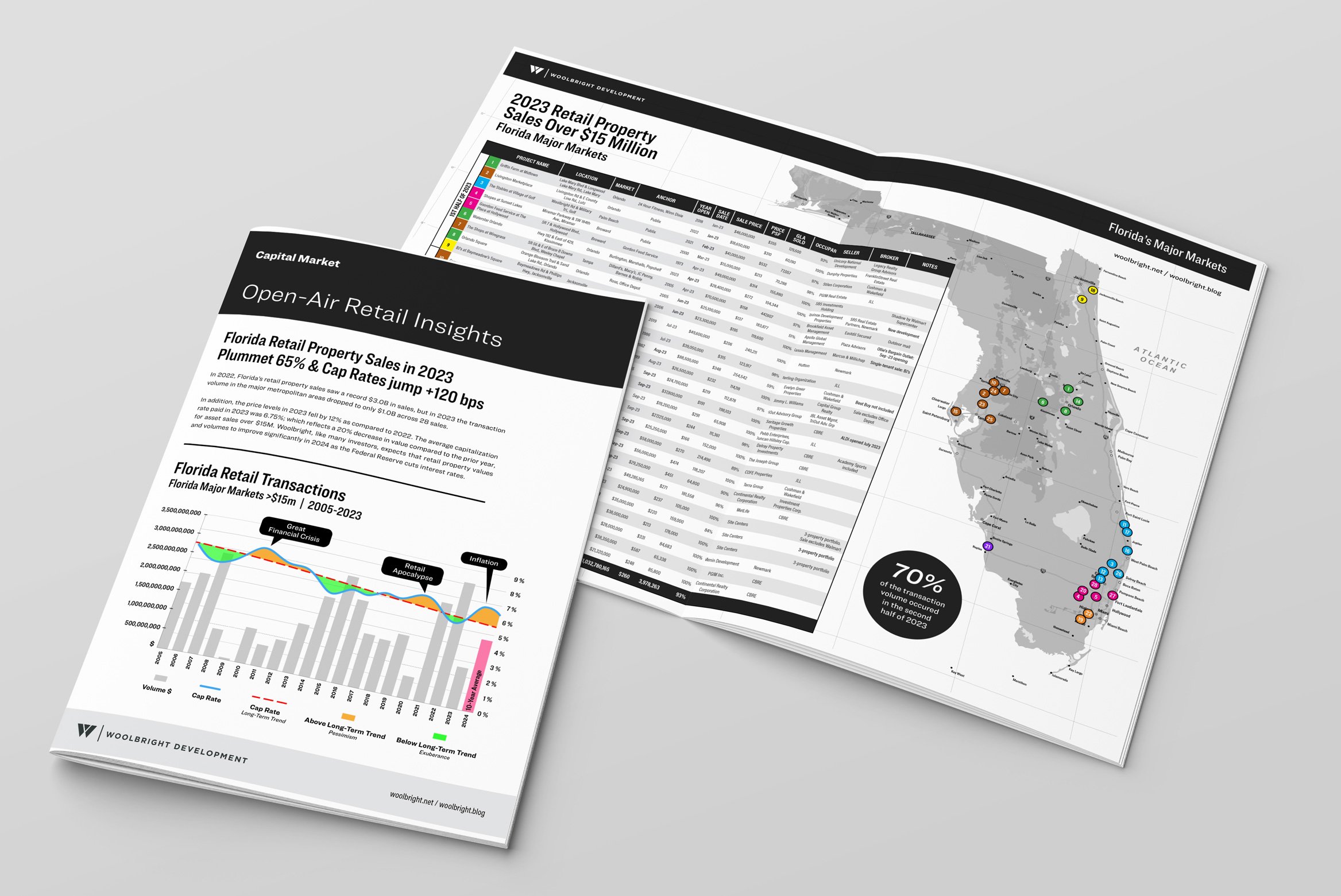In 2021, national tenants in Florida ‒ defined as those tenants with 15 or more locations ‒ closed nearly 300 stores across the state. At first glance, this may seem like a sure sign of the retail apocalypse. But let’s look a little closer.
Big box space comprises 75% of the retail inventory in Florida and represents 80% of sales. Far from shrinking, in 2021 big box retailers added 182 locations across the state and added a net of 4.0M SF of new space. So clearly, neither the retail apocalypse or the pandemic are affecting the big box players.
Small shops, meanwhile, represent all of the retail contraction in Florida, closing a total of 480 stores statewide. But the majority of these closures were not from retailers or restaurants ‒ those national tenants closed only 38 and 31 stores, respectively, which represents only a minor post-Covid adjustment. Instead, the majority of the national retailer contraction was felt in the service industry and in the banking sector. While the pandemic may explain the challenges faced by the service industry, banks were primarily affected by two factors. First, SunTrust and BB&T merged into Truist, a move which directly caused 50% of the branch closings. Second, the continued rise in online banking has impacted the banking industry as a whole, prompting the entire sector to operate more efficiently.



















